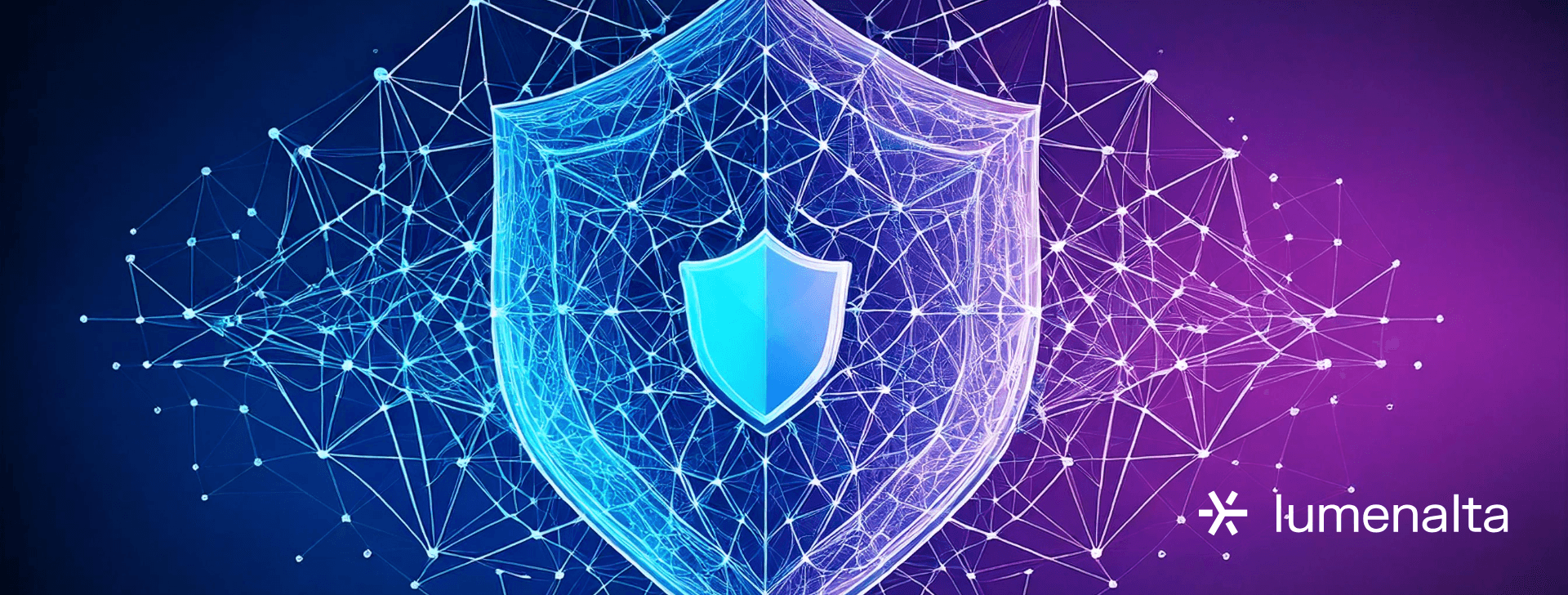

11 best practices for data privacy and compliance
FEB. 20, 2025
5 Min Read
Protecting sensitive data requires more than just security tools—it requires structured policies, regulatory compliance, and governance frameworks that strengthen accountability.
Privacy regulations continue to develop, requiring businesses to implement clear safeguards that align with industry standards. A strong approach to data privacy reduces legal risks, improves operational transparency, and builds customer trust. Without structured policies, organizations face increased vulnerability to breaches, regulatory fines, and reputational damage. Regulatory frameworks such as GDPR, CCPA, and HIPAA establish strict guidelines for managing sensitive data. Compliance with these standards requires consistent oversight, secure data handling practices, and structured frameworks that define access controls, risk management strategies, and incident response protocols. Implementing best practices for data privacy and compliance supports long-term business resilience, helping organizations adapt to regulatory changes while maintaining secure and efficient operations.
Key takeaways
- 1. A structured data privacy framework improves security, regulatory compliance, and governance by defining clear policies for data handling.
- 2. Risk assessments help identify vulnerabilities in security controls, improving privacy protection and reducing legal exposure.
- 3. Data minimization strategies lower compliance risks by limiting the collection and storage of unnecessary personal information.
- 4. Access control policies and employee training strengthen privacy measures, reducing the risk of unauthorized data access.
- 5. Regular compliance audits and updates to privacy policies keep security practices aligned with regulatory changes.
Understanding data privacy and compliance
Handling sensitive information responsibly requires businesses to establish structured policies that align with regulatory expectations. Data privacy and compliance work together to protect individuals' rights while reducing legal and financial risks. Without strong safeguards, organizations face penalties, security breaches, and a loss of trust among customers and stakeholders.
Data privacy governance is a foundational framework for organizations managing large volumes of sensitive data. Adopting structured processes for data collection, processing, and security strengthens internal controls and minimizes exposure to cyber threats. Regulatory bodies establish guidelines that dictate how personal and business-critical information must be handled, making compliance a key priority for finance, healthcare, and e-commerce industries. Strengthening governance practices provides long-term benefits, including improved operational efficiency and a reduced risk of legal disputes.
“Data privacy governance serves as a foundational framework for organizations managing large volumes of sensitive data.”
What is data privacy?
Protecting personal and sensitive information from unauthorized use requires well-defined policies restricting access and preventing data misuse. Individuals have the right to know how their data is collected, stored, and shared. Businesses that implement clear privacy policies meet regulatory requirements and build trust with customers.
Regulatory frameworks such as the General Data Protection Regulation (GDPR) and the California Consumer Privacy Act (CCPA) establish strict guidelines on how personal information is handled. These regulations require businesses to disclose data collection practices, allow users to request data deletion, and apply strong security measures. Without compliance, organizations risk financial penalties, reputational damage, and operational disruptions.
What is data compliance?
Legal, industry-specific, and regulatory requirements dictate how businesses manage sensitive information. Compliance frameworks exist to create uniform standards for handling data securely while mitigating risks associated with fraud, breaches, and operational misconduct. Failure to meet compliance obligations results in audits, fines, and loss of business credibility.
Data protection laws vary across industries and geographic regions. Healthcare organizations must follow the Health Insurance Portability and Accountability Act (HIPAA), which mandates the secure handling of patient records. Retailers and financial institutions handling credit card transactions must adhere to the Payment Card Industry Data Security Standard (PCI DSS) to protect payment data. Financial reporting regulations such as the Sarbanes-Oxley Act (SOX) require strict internal controls to prevent fraud. Compliance structures define accountability measures that guide businesses in managing data responsibly.
Role of governance in data privacy

Privacy policies, security measures, and compliance structures rely on governance frameworks to establish accountability. Clear policies and structured oversight strengthen data security and improve regulatory alignment. Businesses risk inconsistent data handling practices without proper governance, leading to compliance violations and security vulnerabilities.
Governance frameworks assign roles and responsibilities for managing privacy risks. Chief information security officers (CISOs), data protection officers (DPOs), and compliance teams oversee regulatory adherence, conduct audits, and implement safeguards to protect sensitive data. Strong governance models include incident response strategies, internal reporting structures, and regular evaluations to address emerging risks.
Operational transparency improves when organizations apply structured governance measures to data privacy and compliance. Reviewing policies, refining security protocols, and adapting to regulatory changes support business continuity while reducing the likelihood of legal action. Establishing clear oversight mechanisms creates a more reliable approach to data management, helping businesses reduce risks and maintain stakeholder trust.
11 best practices for data privacy and compliance
Protecting sensitive information and adhering to regulatory standards require structured strategies addressing security risks and legal obligations. Businesses without a clear approach to data privacy and compliance expose themselves to financial penalties, reputational harm, and operational disruptions. Implementing data privacy best practices helps strengthen security measures, reduce exposure to breaches, and maintain customer trust.
1. Develop a comprehensive data privacy framework
A structured data privacy framework establishes policies and controls that guide businesses in managing sensitive information. Without a defined framework, organizations face inconsistencies in data handling, increasing the risk of security incidents and non-compliance.
Privacy frameworks outline the rules for collecting, storing, processing, and sharing data. Clear guidelines help businesses apply consistent security measures while addressing industry-specific regulations.
Standardizing data privacy policies improves internal governance and reduces the risk of regulatory violations. A well-documented framework simplifies compliance audits, strengthens operational security, and enhances customer confidence in data protection practices.
2. Conduct regular risk assessments
Security vulnerabilities and regulatory risks change over time, making continuous assessments necessary for businesses handling sensitive data. Without frequent evaluations, organizations may overlook weaknesses that expose them to data breaches and compliance violations.
Risk assessments identify gaps in security measures, helping businesses prioritize actions to mitigate potential threats. Assessing data access controls, encryption protocols, and incident response plans provides insight into areas requiring improvement. Evaluations should include third-party vendors handling business-critical information, as external partners also introduce compliance risks.
A structured approach to risk assessments improves security preparedness. Identifying and addressing vulnerabilities before they lead to breaches strengthens data privacy and regulatory compliance while reducing financial and legal risks.
3. Implement data minimization strategies

Collecting excessive personal information increases the risk of data exposure. Businesses that gather and store unnecessary data create compliance challenges and security vulnerabilities that could have been avoided with a structured approach to data minimization.
Minimizing data collection limits the amount of information that needs protection, reducing the risk of breaches and unauthorized access. Reviewing data retention policies ensures that businesses only keep essential information necessary for operations. Secure disposal methods, such as encryption-based deletion and automated data purging, prevent unauthorized retrieval of outdated records.
A strong data minimization strategy strengthens compliance with privacy laws and improves security resilience. Reducing the volume of stored data streamlines compliance processes and lowers the likelihood of data misuse.
4. Ensure transparency in data processing
Customers and stakeholders expect clarity on how their data is collected, used, and shared. Businesses that lack transparency in data processing face challenges related to regulatory compliance and consumer trust.
Privacy policies should outline data collection practices in clear, accessible language. Giving users control over their personal information, such as opt-in and opt-out options, strengthens trust. Regulatory requirements such as GDPR mandate explicit consent before businesses can collect or process personal data.
Clear communication about data processing practices reduces legal exposure while reinforcing business credibility. Transparent privacy policies help businesses align with compliance standards and foster stronger customer relationships.
5. Establish clear data access controls
Unauthorized access to sensitive information creates compliance risks and security threats. Businesses that lack structured access controls increase their vulnerability to data breaches and internal misuse.
Access management policies define who can view, modify, or share specific data. Role-based access control (RBAC) and multi-factor authentication (MFA) enhance security by restricting sensitive information to authorized personnel. Monitoring access logs and regularly reviewing permissions prevent unauthorized activities that could compromise compliance.
Applying strict access controls improves data security and regulatory adherence. Preventing unauthorized access protects business-critical information while reducing exposure to cyber threats.
6. Train employees on data privacy practices
Human error remains a leading cause of data breaches, making employee training essential for maintaining privacy and compliance standards. Organizations without structured training programs face increased risks of accidental data exposure and regulatory violations.
Training programs should educate employees on security best practices, phishing prevention, and regulatory requirements. Regular workshops and simulated exercises reinforce awareness of privacy risks and data protection protocols. Businesses that operate in regulated industries must provide ongoing compliance training to align with advancing legal requirements.
Equipping employees with data privacy knowledge strengthens security culture and reduces compliance risks. Well-informed teams contribute to safer data handling practices and improve overall operational integrity.
7. Maintain data quality and accuracy

Inaccurate or outdated data affects compliance and operational efficiency. Businesses that store incorrect information risk violating data protection regulations while compromising their ability to make strategic decisions.
Routine data validation ensures that records remain accurate and up to date. Implementing automated verification tools reduces errors and improves data integrity. Compliance regulations such as GDPR require organizations to provide users with the ability to correct inaccurate information.
Accurate data improves compliance and operational effectiveness. Maintaining data quality minimizes regulatory risks while enhancing business reliability and trustworthiness.
8. Utilize data protection technologies
Data encryption, secure storage solutions, and automated monitoring tools are critical in preventing breaches and compliance failures. Businesses that rely on outdated security measures increase their exposure to cyberattacks and unauthorized access.
Encryption protects sensitive information by converting data into unreadable formats that require authorized decryption keys. Secure cloud storage and intrusion detection systems (IDS) strengthen defenses against unauthorized breaches. Automated compliance monitoring tools track regulatory adherence and generate reports for audit readiness.
Advanced security technologies improve compliance readiness while reducing the likelihood of data breaches. Applying modern protection measures enhances business resilience against cyber threats.
9. Create incident response plans
Cyber threats and data breaches create immediate operational and legal challenges. Businesses without structured incident response plans struggle to mitigate damage, leading to prolonged disruptions and regulatory penalties.
Incident response strategies outline steps for identifying, containing, and resolving security incidents. Assigning dedicated response teams, establishing notification protocols, and conducting simulated breach scenarios improve preparedness. Regulatory bodies require businesses to report security incidents within specific timeframes, making response plans essential for compliance.
A structured response strategy reduces financial and reputational risks. Rapid containment and resolution of security incidents strengthen overall data protection measures.
10. Regularly review and update compliance policies
Privacy laws and industry regulations change over time, requiring businesses to adapt compliance policies accordingly. Outdated policies increase the risk of legal violations and security vulnerabilities.
Scheduled compliance reviews help businesses stay aligned with new legal requirements. Internal audits, third-party assessments, and legal consultations ensure that privacy policies remain current. Updating policies based on regulatory changes prevents compliance gaps and strengthens governance frameworks.
Proactive compliance management reduces exposure to legal penalties. Keeping policies up to date supports business continuity while reinforcing regulatory adherence.
11. Document and audit data privacy procedures

Regulatory authorities require businesses to demonstrate compliance through documented privacy practices. Organizations that lack structured documentation face challenges in proving adherence to data protection laws.
Maintaining detailed records of data handling procedures, security measures, and incident responses simplifies compliance audits. Internal audits and third-party evaluations validate the effectiveness of privacy strategies while identifying areas for improvement. Structured documentation also assists in responding to legal inquiries and customer data requests.
Clear documentation strengthens compliance readiness. Well-maintained records improve operational transparency and support regulatory reporting requirements.
Applying these best practices strengthens data privacy governance while reducing compliance risks. A structured security and regulatory adherence approach supports long-term business sustainability and operational efficiency.
“Standardizing data privacy policies improves internal governance and reduces the risk of regulatory violations.”
What is a data privacy framework?

Protecting sensitive information requires a structured approach that aligns security measures with legal obligations. A data privacy framework provides a standardized set of policies, controls, and procedures that guide organizations in managing personal and business-critical information responsibly. Without a structured model, businesses risk regulatory violations, security breaches, and operational inefficiencies, creating long-term financial and legal challenges. Establishing a privacy framework strengthens data protection efforts while improving compliance with industry regulations.
Privacy frameworks define specific data collection, storage, access, and usage protocols. Clear guidelines help organizations apply consistent privacy policies across departments, reducing exposure to risks such as unauthorized access, data leaks, and misuse of personal information. Security teams, compliance officers, and legal advisors use these frameworks to create policies that align with global regulations. Without a formal structure, organizations struggle to maintain transparency in their data-handling practices, which weakens consumer confidence and increases the likelihood of noncompliance.
Standardized frameworks help streamline compliance audits, improve risk management, and strengthen operational security. Establishing a clear governance model for data privacy enhances regulatory alignment and improves internal accountability. Long-term benefits include reduced exposure to legal penalties, improved operational efficiency, and stronger customer relationships built on trust and transparency. Organizations prioritizing structured privacy frameworks create a more secure and sustainable approach to handling sensitive information.
Data privacy is more than a compliance requirement—it’s a critical component of responsible business operations. Protecting sensitive information strengthens trust, minimizes security risks, and ensures alignment with industry regulations. At Lumenalta, we provide tailored data privacy solutions that help businesses stay secure and compliant while maintaining operational efficiency. Let’s build a stronger foundation for data protection.
table-of-contents
- Understanding data privacy and compliance
- What is data privacy?
- What is data compliance?
- Role of governance in data privacy
- 11 best practices for data privacy and compliance
- 1. Develop a comprehensive data privacy framework
- 2. Conduct regular risk assessments
- 3. Implement data minimization strategies
- 4. Ensure transparency in data processing
- 5. Establish clear data access controls
- 6. Train employees on data privacy practices
- 7. Maintain data quality and accuracy
- 8. Utilize data protection technologies
- 9. Create incident response plans
- 10. Regularly review and update compliance policies
- 11. Document and audit data privacy procedures
- What is a data privacy framework?
- Common questions about data privacy and compliance
Common questions about data privacy and compliance
What are the key components of a data privacy framework?
How does data privacy governance improve compliance?
What are the biggest risks of poor data privacy practices?
Why is data minimization important in privacy compliance?
How often should businesses review their data privacy policies?
Want to learn how data privacy and compliance can bring more transparency and trust to your operations?










